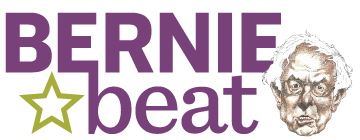Published January 21, 2004 at 10:29 p.m.
Forget Saddam Hussein and al Qaeda for a moment. When it comes to locating real weapons of mass destruction that claim tens of thousands of American lives each year, we need look no further than our own backyards. Vermont has long enjoyed a reputation as one of the nation's cleanest and greenest states. But last year's revelation that childhood leukemia rates in Clarendon are 19 times higher than the national average -- possibly the result of an underground benzene plume in the area -- was a sobering reminder that there are no completely safe havens from deadly chemicals.
Scientists now estimate that every person alive on the planet today carries within his or her body at least 700 different contaminants, most of which have never been studied for their impact on human health. In fact, compared to what researchers know about the pollutants in our air, water, soil, food and wildlife, what we understand about the substances within our own bodies is extremely limited.
That said, last week Vermonters were given a valuable tool for identifying potential sources of toxic exposure in their own neighborhoods. Toxics Action Center, a Montpelier-based nonprofit organization, released a report entitled "Toxics in Vermont: A Town-by-Town Profile." The report includes a detailed map and list of the state's various Superfund and hazardous waste sites, landfills, air and water-pollution sources and other culprits of environmental nastiness.
What's startling about the map is how widespread and pervasive these environmental problems are. With green dots denoting the state's 1360 hazardous waste sites, red dots indicating the 560 hazardous waste generators, black diamonds marking its nine Superfund sites and so on, Vermont looks less like a green paradise than a patient in the final throes of smallpox. And although the dots tend to be clustered around major population centers such as Burlington, Montpelier, Rutland and Brattleboro, every county in the state is home to at least one significant environmental hotspot, ranging from a closed landfill to a nuclear power plant.
"Oftentimes our beautiful Vermont landscape can act as a disguise for the toxic pollution that is actually lurking beneath," says Annie Leary, field organizer for Toxics Action Center. As Leary points out, about 363,000 pounds of chemicals were dumped into the environment in 2001. Chittenden County alone contributed almost half of that total.
Many of these hazardous waste sites have been around for years, even decades -- the oldest, the Pine Street Barge Canal, dates back to 1908. But even though we know far more today than we did back then about the human and ecological costs of dumping wastes, the number of sites continues to grow, as does the cost of cleaning them up. "We're sitting on a really big problem here," says Ben Davis, of the Vermont Public Interest Research Group (VPIRG). "The goal is to not let it get any bigger and not allow new sources to come in." Davis points out that of the thousands of hazardous waste sites on the map, only a handful will be cleaned up using federal dollars.
So how do Toxics Action Center and VPIRG expect Vermonters to use this data? Leary urges communities to get organized and put more pressure on state agencies and local representatives to fund those cleanups. Davis also says he'll be looking closely at Governor Douglas' proposed budget for the Agency of Natural Resources, which in recent years has consistently been underfunded, particularly for waste-site cleanups. Ultimately, both organizations hope that polluters will finally learn the lesson they were surely taught in kindergarten about cleaning up their own messes.
*****
Speaking of poisons in public policy, few actions of the Bush administration were as venomous to civil liberties as the USA Patriot Act. When Congress passed the act in October 2001, after limited Congres-sional debate and no public hearings, the bill contained language making it easier for federal agents to snoop into our reading and buying habits, particularly at libraries and bookstores. Needless to say, that provision wasn't easy to swallow for many librarians, who recognize that the rights of free speech and free press tend to get rather chilly when Big Brother is eyeballing our reading habits. Moreover, the provision imposed a gag order on librarians, preventing them from even discussing the aforementioned prying if and when it occurs.
Though librarians aren't by nature a noisy lot, this particular provision had plenty of them raising a ruckus. And much of that sounding-off occurred thanks to Trina Magi, a librarian at the University of Vermont's Bailey/Howe Library. In the fall of 2002, Magi helped organize statewide opposition to the USA Patriot Act, when she convinced the Vermont Library Association to go on record as the nation's first library group to formally oppose the provision. Eventually, she solicited the support of Rep. Bernie Sanders to introduce legislation repealing that wording in the law. Already, 140 co-sponsors have signed onto Sanders' bill.
This month, Mother Jones, the nation's foremost magazine of rabble-rousers and muckrakers, chose to profile Magi in its "Hellraiser of the Month" section. "I don't feel uncomfortable about being here," Magi told Mother Jones. "We need to have the debate that didn't happen before the law passed."
More By This Author
Speaking of...
-

Vermont Awarded $62 Million in Federal Solar Incentives
Apr 22, 2024 -

Bernie Sanders Sits Down With 'Seven Days' to Talk About Aging Vermont
Apr 3, 2024 -

Sociologist and Author Nikhil Goyal Talks Education, Books and Bernie
Dec 6, 2023 -

Rep. Balint Reverses Course, Calls for Cease-Fire in Gaza
Nov 16, 2023 -

On the Beat: Grammy Noms for Noah Kahan and Bernie Sanders; the Silent Mile Return
Nov 15, 2023 - More »
Comments
Comments are closed.
From 2014-2020, Seven Days allowed readers to comment on all stories posted on our website. While we've appreciated the suggestions and insights, right now Seven Days is prioritizing our core mission — producing high-quality, responsible local journalism — over moderating online debates between readers.
To criticize, correct or praise our reporting, please send us a letter to the editor or send us a tip. We’ll check it out and report the results.
Online comments may return when we have better tech tools for managing them. Thanks for reading.














































